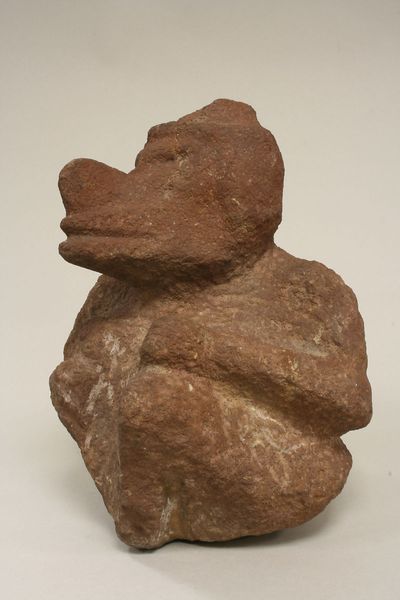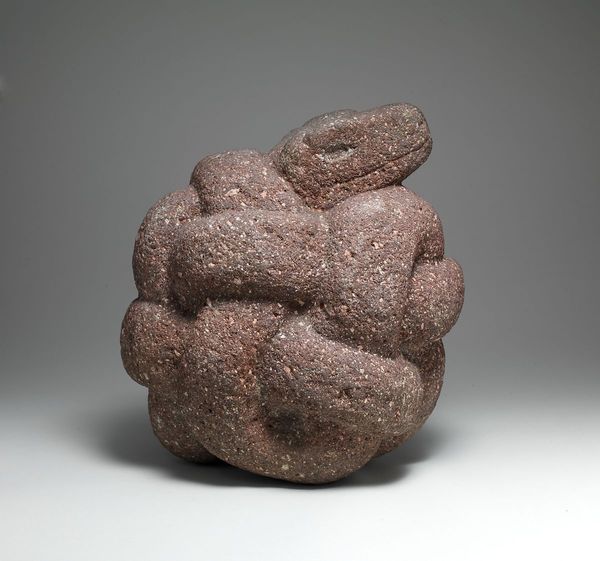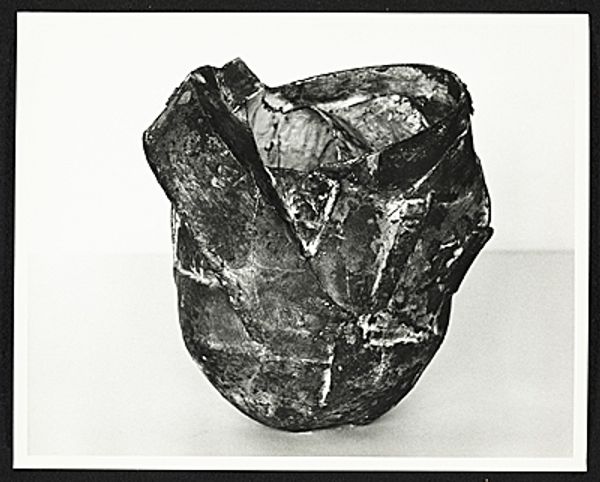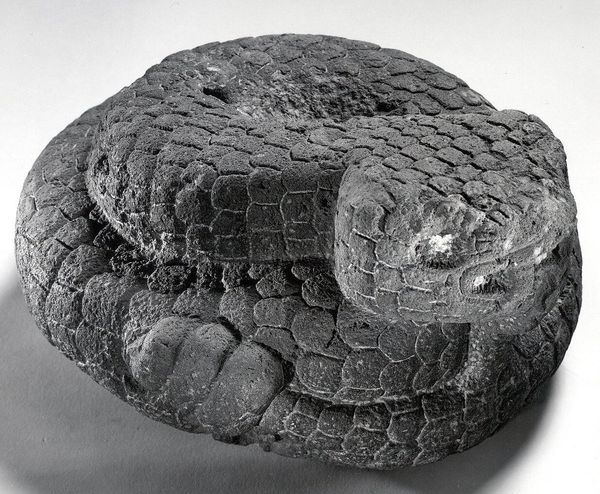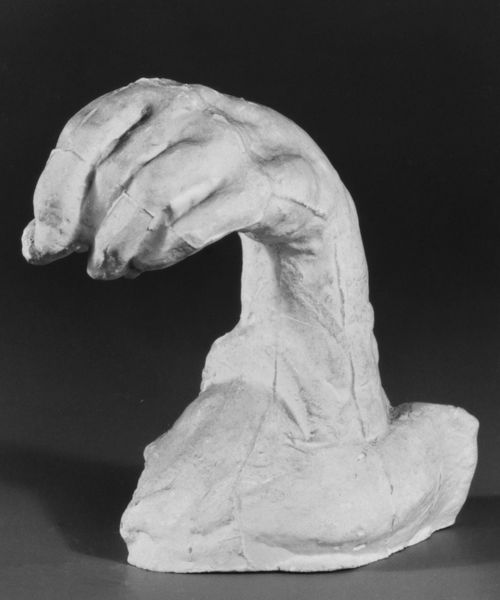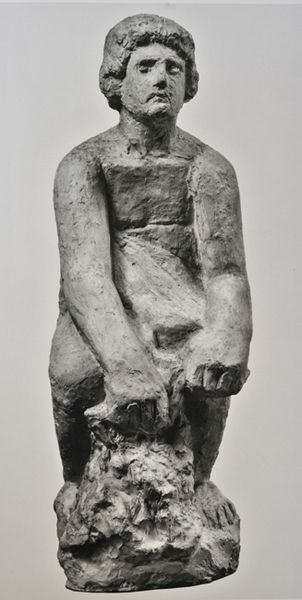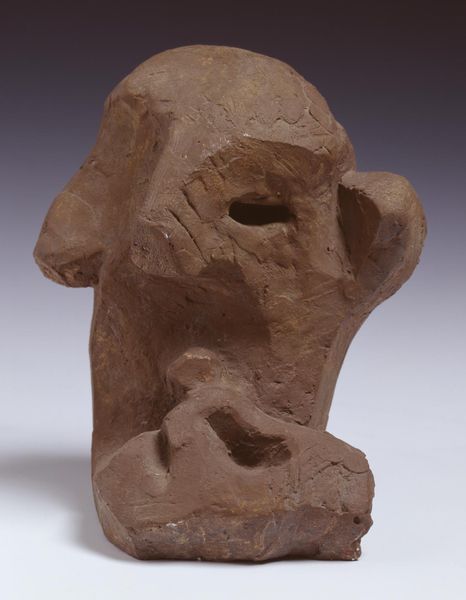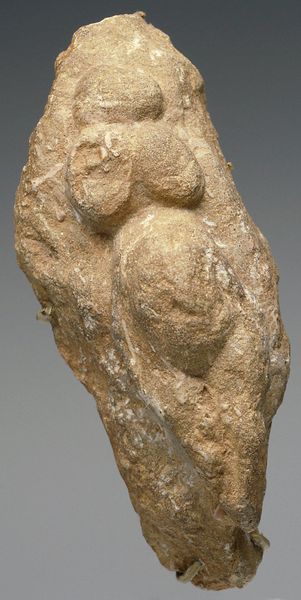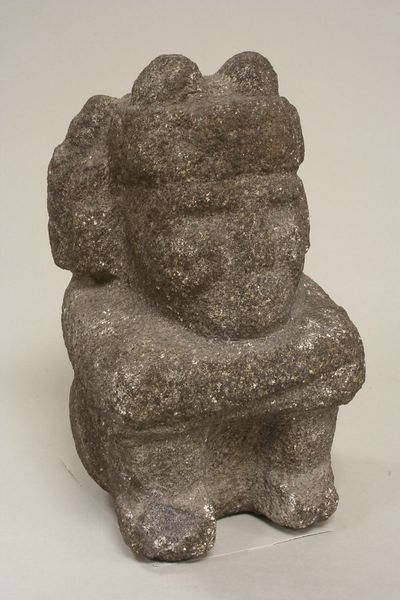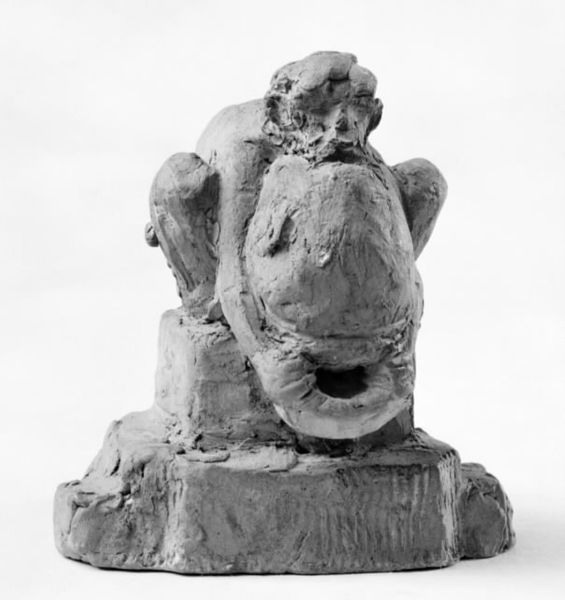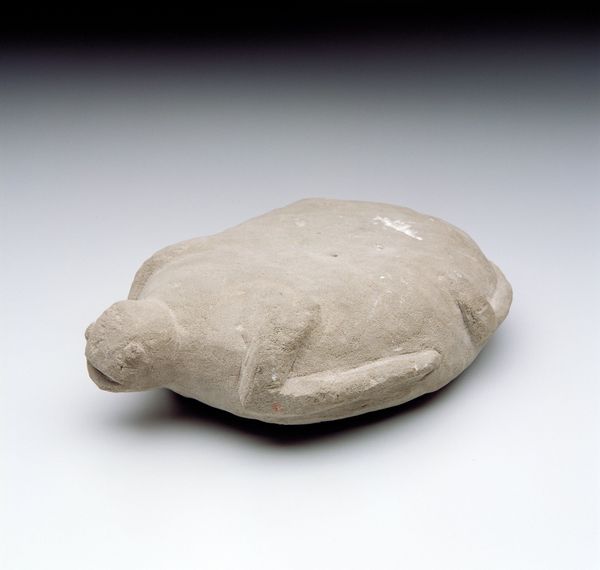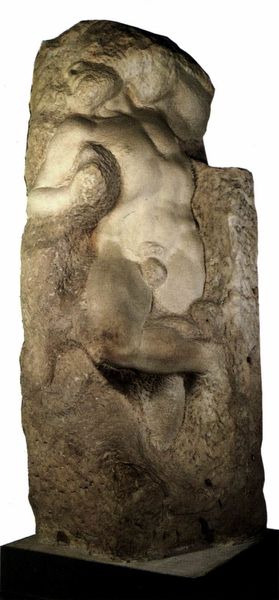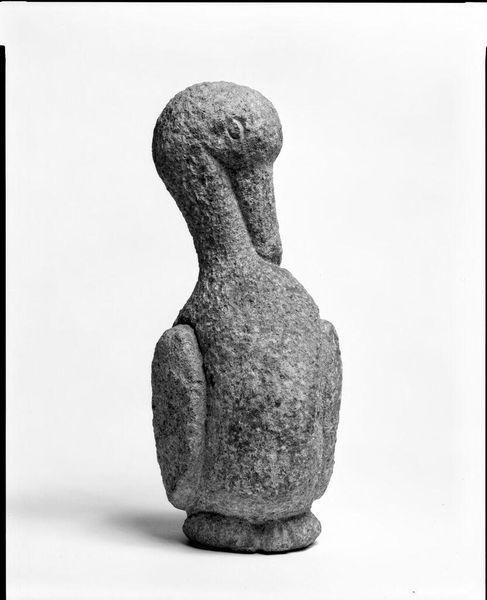
carving, sculpture
#
carving
#
sculpture
#
figuration
#
sculpture
#
black and white
#
statue
#
indigenous-americas
Copyright: Public domain
Curator: This intriguing sculpture is entitled “Coiled Serpent.” It is currently located here at the Met. Editor: My first impression is its sense of contained power, like a spring tightly wound and ready to unleash. The stone, whatever it is, feels very dense. Curator: Indeed. The serpent is a powerful symbol in Mesoamerican cultures, frequently linked with cyclical renewal and the earth’s fertility. Its presence within a culture reveals a complex layering of meaning that speaks to regeneration. Editor: You see that coiling and I see ouroboros, the snake eating its own tail—an ancient symbol present across cultures that means continuity. The serpent is an old archetype for transformation too; it sheds its skin to begin again. Curator: We see this manifested through the role of the serpent deity Quetzalcoatl in Aztec culture, who was responsible for the creation of humans and sustenance. The prevalence of this imagery highlights the societal anxieties of a population undergoing change. Editor: Look how the artist has stylized the scales! This adds to that feeling of latent power and restrained potential energy. It's beautiful and dangerous. This piece speaks volumes without uttering a single word. The serpent is whispering things about what the old ways means, but is coiling, keeping its true self still hidden. Curator: Right. This “Coiled Serpent” becomes not just a work of art, but a historical touchstone reflecting beliefs about the cosmos and humankind’s place within it. Editor: Understanding this sculpture provides a look at a culture’s deepest values—the universal hope for continuity and transformation when facing what is new.
Comments
No comments
Be the first to comment and join the conversation on the ultimate creative platform.
